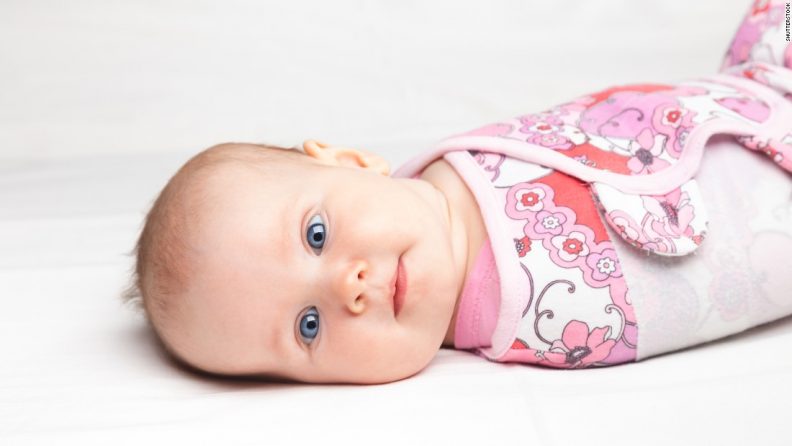Your shopping cart is empty!
CLOSE
October is SIDS Awareness Month and parents are encouraged to learn more about the risk factors involved in SIDS and what steps they can take to prevent it. SIDS is defined as the death of an infant, less than 1 year of age that occurs suddenly and unexpectedly and cannot be explained after a thorough investigation is conducted. Scientists have learned a great deal about SIDS over the last years and SIDS cases have decreased drastically, but there are still over 4,000 kids that die unexpectedly each year with no known cause.
The leading theory is that SIDS affects babies with an undetected condition (such as a respiratory or heart vulnerability) combined with an environmental stressor (such as an obstructed airway). Babies born prematurely, have a young mother (under 20 years old), or experience a life-threatening event early in life are at a higher risk for SIDS. There’s no way to prevent SIDS entirely, but you can work to make your baby’s chances of avoiding the syndrome as low as possible.
When parents better understand the risks involved with SIDS, this can help to reduce future infant deaths. Here are five tips on how to help reduce the risk of SIDS along with how to make sure you are swaddling baby correctly and safely.
1. Always place baby on his back to sleep.
Many studies have found that there is a higher incidence of SIDS among babies who are placed to sleep on their stomachs. It is thought that sleeping on the stomach narrows the baby’s airway and causes difficulty breathing. There is also a possibility that an infant sleeping on his stomach is “rebreathing” his own exhaled carbon dioxide. Baby must be put to sleep on his back throughout the first year of life. Swaddling helps baby sleep on their backs and helps prevent sleep-deprived parents from placing baby on their stomach to sleep.
2. Keep baby’s crib clear of blankets and toys.
You never want to put blankets, comforters, bumpers, stuffed toys or pillows anywhere near the baby while he is sleeping. Baby’s head and face must remain free of any blankets or coverings. If using a blanket, make sure it gets tucked around the mattress but a tight fitted sheet is best. By keeping the crib clear it can prevent rebreathing and suffocation. Bumper pads should also be avoided as they can be a potential risk of suffocation or strangulation.
3. Practice safe swaddling.
A Pediatrics study suggests that babies who are swaddled experience a more restful sleep than unswaddled babies and can awaken more easily in response to noise, potentially decreasing the risk of SIDS.
For safe swaddling parents should always:
- Use a swaddle where baby can have good hip range of motion; swaddling too tightly can cause hip dysplasia.
- The preferred sleeping position for babies is the “hands over heart” position; use a swaddle that does not pin baby’s arms to the side. Babies (and especially babies with colic) can self-sooth and settle by using their hands and fingers in the natural “hands to heart” position just like babies do in the womb.
- Use a swaddle that will not unravel- this prevents blankets from becoming lose and covering baby’s face. There are swaddles that do not even require wrapping!
- Don’t over-swaddle baby or double swaddle- overheating baby is linked to SIDS. The new Woombie Air is the first breathable swaddle that regulates baby’s body temperature by allowing excess heat to escape. (Another tip, use a fan in baby’s room to maintain airflow. Plus, the white noise sound the fan creates will help baby sleep!)
- When baby begins to roll, it’s no longer safe to swaddle. To transition baby to arms-free sleep, take one arm out of the swaddle at nap time and then when baby is used to it, try it at night time. Take out the other arm and remove the swaddle completely gradually.
4. Keep baby at a comfortable temperature.
You don’t want baby to get too warm while sleeping so it’s best to keep them somewhere that’s room-temperature and don’t excessively clothe them. It has been suggested that babies who get too warm go into a deeper sleep making it more difficult for them to awaken. KidsHealth.org suggests keep the room at a temperature that feels comfortable for an adult in a short-sleeve shirt.
First Candle, a national nonprofit health organization uniting parents, caregivers and researchers nationwide with government, business and community service groups to advance infant health and survival, says, “When a healthy baby becomes overheated their brain recognizes the problem and attempts to correct it. When a baby predisposed to SIDS overheats, nothing happens to correct the situation.”
5. Place baby on a firm sleep surface.
According to the National Institute of Child Health and Human Development, SIDS is sometimes called “crib death” and while cribs themselves don’t cause SIDS, the baby’s sleep environment can influence sleep-related causes of deaths. It’s important to use a safety-approved, firm mattress covered with a fitted sheet and avoid placing baby on a pillow, waterbed, couch, chair or other soft surface. This can help prevent smothering or suffocation. You can check the safety of your baby’s mattress or crib by contacting the Consumer Product Safety Commission at www.cpsc.gov.
While the exact cause of SIDS remains a mystery, we’re closing in on a solution. The number of SIDS deaths has declined by 50% since 1990, but more work is needed. You can help by donating to the American SIDS Institute and helping us share these tips.

